My website is reader-supported. Buying through links on my site may result in me earning a CUSTOMER REFERRAL FEE at no extra cost to you.
Check out the latest deals at our top diamond vendor choice: James Allen
Diamond Shape – The Ultimate Guide
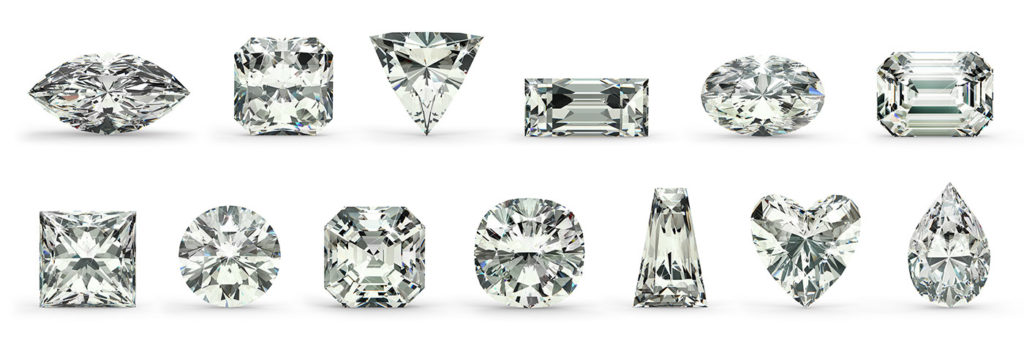
Diamond shape examples
Diamonds come in a variety of shapes. The most popular diamond shape is the brilliant round cut, representing about two-thirds of all diamonds sold. Other popular shapes include the princess, cushion, and emerald cuts.
There are several very popular fancy diamond shapes, including the pear, heart, and trillion cuts. Who can say which one is the most beautiful? It’s a matter of personal preference and taste. But each has certain advantages and disadvantages when it comes to the overall look, brilliance, and price per carat.
This blog post introduces you to each shape and includes details to help you decide which size, color, and clarity would best meet your needs. But before that, you need to know that diamond shape and diamond cut are not the same.
Content overview
- Difference between shape and cut
- Round brilliant diamond
- Princess cut diamond
- Oval Cut Diamond
- Marquise Diamond
- Pear shaped diamonds
- Cushion cut diamond
- Emerald cut diamond
- Asscher cut diamond
- Radiant cut diamond
- Heart Shape diamond
- Impact of shape on diamond price
- Diamond shape with the most sparkle
- Diamond shape that appears the largest
- Ranking of the most popular diamond shapes
- Conclusion
The Difference Between a Diamond Shape & Cut
When discussing diamond shape and cut, people often regard these as the same, but they’re not. A diamond’s shape is distinctly different than its cut, although the terms are quite often used interchangeably, which you’ll even notice me doing in this article.
However, it is important to point out the difference.
A diamond’s shape describes the outline form and appearance of the stone. For example, a round diamond is circular, a pear-shaped diamond resembles the shape of a pear, and a heart-shaped diamond is cut to form a heart.
A diamond’s cut has to do with the symmetry of its facets and dimensions and how the stone reflects light in the end. For example, you can have a round-shaped diamond with different cut grades.
Click here to see a round-shaped diamond with an Ideal cut grade and here to view one with a good cut grade.
Each shape is unique in how it shines, which determines its sparkle. Let’s now take a closer look at the top 10 diamond shapes in terms of popularity.
Ranking of the most popular shapes
Below is a list of the top 10 diamond shapes in terms of popularity. I will also give you a general overview of each shape’s strongest points along with its weakest. You must know what to look for as you evaluate your options.
- Round – see examples here
- Princess – see examples here
- Oval – see examples here
- Marquise – see examples here
- Pear – see examples here
- Cushion – see examples here
- Emerald – see examples here
- Asscher – see examples here
- Radiant – see examples here
- Heart – see examples here
The Top 10 Diamond Shapes in Order of Popularity
Round Brilliant Diamonds
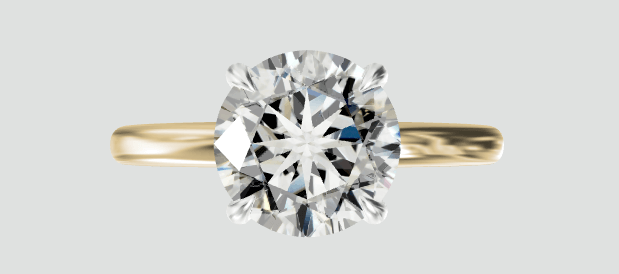
The round cut diamond is the most popular diamond shape for engagement rings, representing approximately 75% of all diamonds sold.
With its 58 facets, the brilliant round diamond is superior to fancy shapes at the proper reflection of light, maximizing potential brightness.
Round diamonds are often referred to as “round cut diamonds.” Due to their shape, round diamonds reflect light better than fancy-shaped diamonds, maximizing the brightness.
Princess Cut Diamond
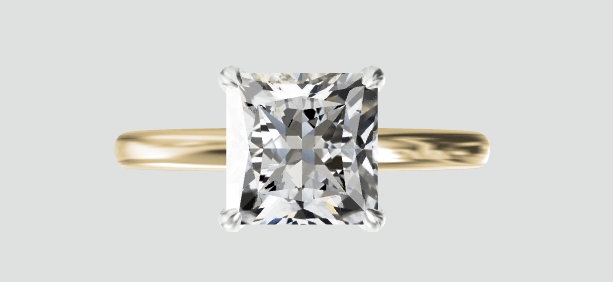
Princess cut diamonds are the most popular fancy shaped diamonds. They first came on the market in 1980 and people especially love them for engagement rings. Like round diamonds, the princess shape works well in almost any ring style or setting.
Oval Diamond
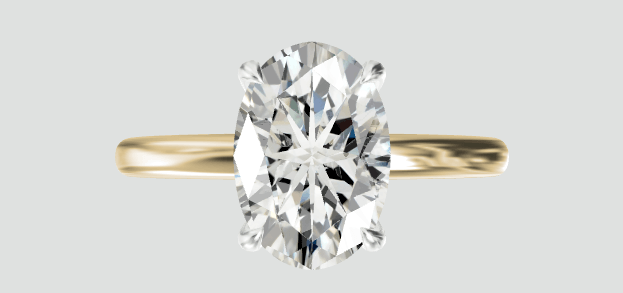
Since oval-shaped diamonds are an elongated modified brilliant-cut, as are all-around diamonds, these two shapes have essentially the same fire and brilliance. Because the oval cut is longer in shape, it appears larger, even though it may be an illusion.
Marquise Cut Diamond
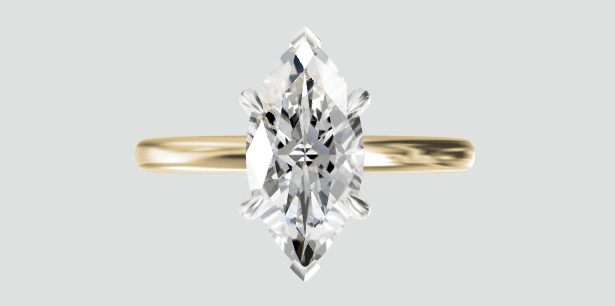
The marquise is shaped like a football. Due to its trimmed corners, some people refer to it as a modified brilliant cut. Like the oval, the marquise is elongated, giving the illusion of being larger than it is. In terms of carat weight, the surface areas of marquise cut diamonds are among the largest of all diamond shapes. So, if you want a large looking diamond, a marquise would be a good choice.
Pear Shaped Diamonds
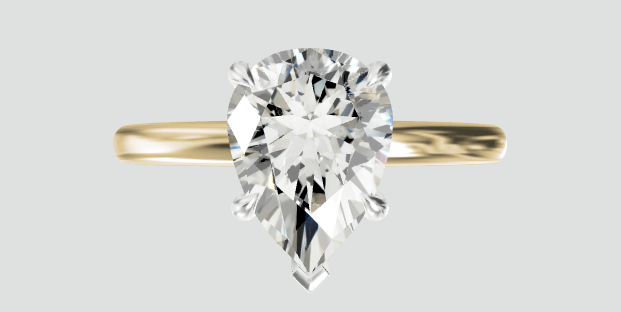
A pear-shaped diamond is another modified brilliant-cut, similar to a marquise, but with one rounded end and a tapered point at the other end. A well-cut pear-shaped diamond should have excellent symmetry. The pointed end should be aligned with the rounded end’s apex. The curves on both sides of the diamond should be uniform and symmetrical.
Cushion Cut Diamonds
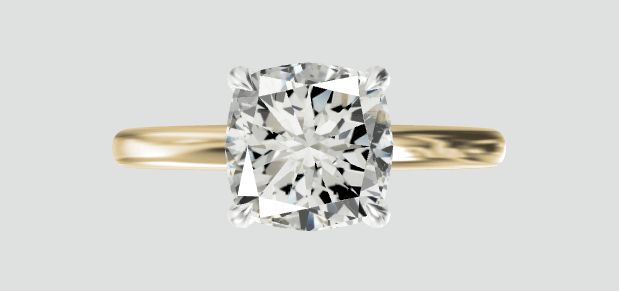
A cushion cut diamond is similar to a square cut with rounded trimmed corners. It’s called a cushion-cut because it resembles a soft pillow. The cushion cut is a classic, having been in existence for nearly two centuries. During the first 100 years, the cushion cut was the most popular diamond shape. In recent years, with a more refined cut, it’s regaining some of its popularity.
Emerald Cut Diamond
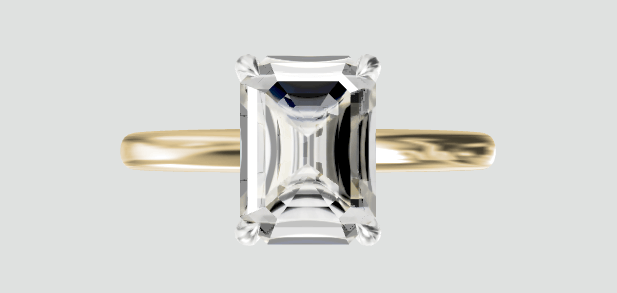
Emerald-cut diamonds have a unique look resulting from step cuts of the pavilion and the large open surface table. Rather than giving off the type of sparkle that a brilliant-cut diamond has, an emerald-cut creates a hall-of-mirrors look, with both light and dark surfaces playing off one another. Due to the large table on emerald-cut diamonds, inclusions are easier to spot and color.
Asscher Cut Diamond

Asscher cut diamonds were first introduced in Holland by the Asscher Brothers in 1902 as a precursor to the emerald cut diamond. The Asscher cut is a square version of the emerald cut, with a higher crown, smaller surface table, and larger step facets. This makes it sparkle with more brilliance than you would see with an emerald cut.
Radiant Cut Diamond

The radiant cut is the first rectangular-shaped diamond with a full brilliant-cut pattern of facets on both its crown and pavilion. As you can imagine, this makes for a vibrant sparkling diamond. The shape is a modified square that resembles both a princess and cushion cut. The radiant cut looks spectacular whether set with square or rounded cornered diamonds.
Heart Cut Diamond
Heart-shaped diamonds are another modified-brilliant cut, and they undeniably convey love, whether given as a solitaire pendant or set in a ring. This is especially true when setting with prongs. Small heart-shaped diamonds of less than a half-carat should be avoided because the shape is difficult to make out.
Diamonds Shape with the Most Sparkle
The round brilliant cut diamond sparkles the most with more brilliance and fire than all other cuts. It has 58 facets, specially designed to provide the most in terms of brilliance and fire. Other diamond cuts with an exceptional amount of sparkle:
- Radiant cut – As implied in the name, the radiant cut diamond is incredibly brilliant, and this is most visible in the light. It’s cut with a total of 70 facets, which lets it take in a tremendous amount of light that it then reflects back.
- Cushion cut – The cushion-cut combines the round brilliant with the old mine cut, which is a classic that goes back 200 years. A well-cut cushion cut diamond should have excellent brilliance and fire.
- Oval cut – Oval shaped diamonds look like elongated round brilliant cut diamonds and therefore exude similar amounts of brilliance and fire. Their longer shape also makes them look larger.
Although the shape does impact a diamond’s brilliance, it’s certainly not the only feature that causes it to sparkle.
As we’ve discussed in other articles, the quality of a diamond’s cut will greatly influence how much it sparkles. A GIA diamond with Excellent cut quality or an AGS diamond with Ideal cut quality will look spectacular in any shape. But you can’t really expect a round brilliant cut to sparkle much if the diamond’s cut grade is just Fair or Poor.
Which Diamond Shape is the Most Expensive?
Round diamonds with a brilliant cut are the most expensive. Therefore, a round brilliant cut diamond 1-carat in size will cost more than a 1-carat diamond with the same cut quality, clarity, and color in another shape.
Suppose you’re wondering why it’s because so much of the rough diamond has to be cut away and wasted to achieve the round brilliant cut and polish. What remains of the original stone is only about 40%, with 60% having been cut away.
The diamond shapes or cuts that are most affordable are the ones in which a large portion of the original stone remains, which are as follows:
- Asscher Cut
- Cushion-Cut
- Emerald-Cut
- Princess-Cut
- Radiant Cut
A diamond’s characteristics will also impact its overall value and price. If you want an emerald cut diamond, you may want to choose a higher clarity and color grade than would be necessary if you got a brilliant round cut. An emerald-cut diamond is priced lower than a round brilliant cut because its large table allows inclusions and color to be more noticeable.
Which Diamond Shapes Appear the Largest On a Diamond Engagement Ring?
Diamonds with an elongated shape tend to look larger than round or square-shaped diamonds. If you want an impressive-looking large-sized diamond, you should consider a pear, marquise, or oval-cut because their surface areas tend to be larger in relation to the carat weight of the diamond.
Below, I’m listing the elongated diamond shapes that look the largest:
- Emerald diamonds
- Marquise diamonds
- Oval diamonds
- Pear diamonds
- Trillion diamonds
Of all of these, a marquise cut diamond typically appears the largest because it is longer than the others, with a face-up size that looks more impressive.
If you’re wondering which diamond shapes look the smallest, it would be the Asscher, cushion, and princess cuts. Because they are fundamentally square-shaped, their surface tables and diameters are small in relation to their total carat weight.
Conclusion
When looking for an engagement ring, it can be difficult to decide on the perfect shape. The traditional round diamond is still a popular choice, but there are many other options.
Choosing which diamond shape you want will depend largely on your taste and preference. However, each option has its pros and cons that should be considered before making your decision.
For example, if you have sensitive skin or tend to develop allergies easily, consider something besides the emerald cut (which features sharp edges).
If size matters most to you, opt for one of the elongated diamond shapes, such as a marquise cut diamond or a pear-shaped diamond.




